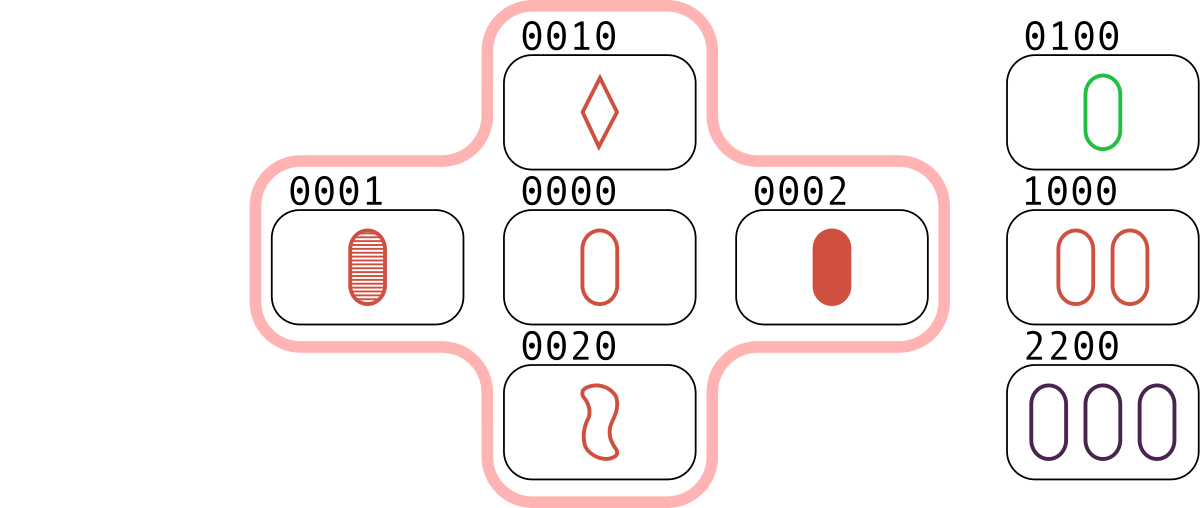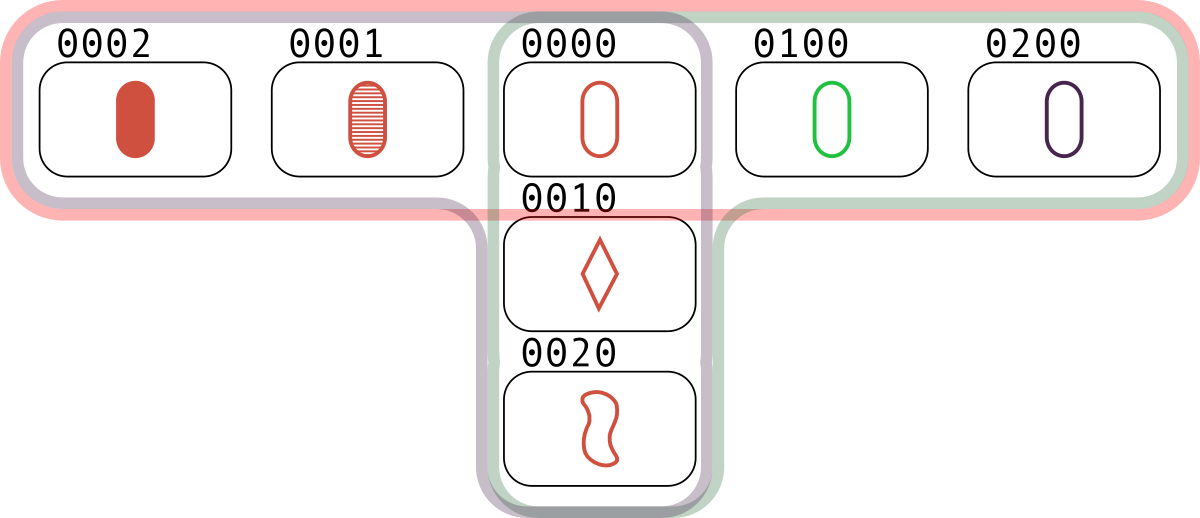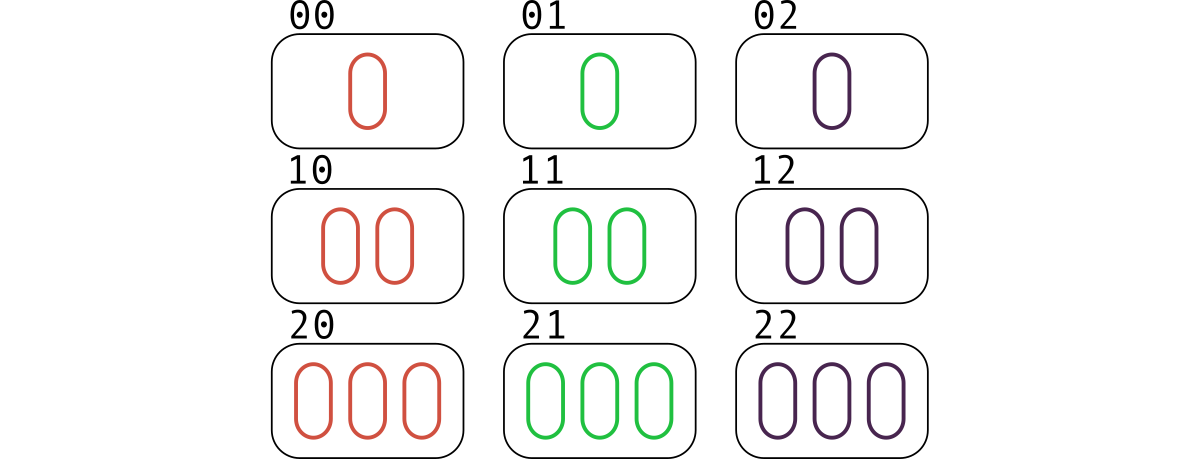Preparando MOJI
You like the card board game "Set". Each card contains $$$k$$$ features, each of which is equal to a value from the set $$$\{0, 1, 2\}$$$. The deck contains all possible variants of cards, that is, there are $$$3^k$$$ different cards in total.
A feature for three cards is called good if it is the same for these cards or pairwise distinct. Three cards are called a set if all $$$k$$$ features are good for them.
For example, the cards $$$(0, 0, 0)$$$, $$$(0, 2, 1)$$$, and $$$(0, 1, 2)$$$ form a set, but the cards $$$(0, 2, 2)$$$, $$$(2, 1, 2)$$$, and $$$(1, 2, 0)$$$ do not, as, for example, the last feature is not good.
A group of five cards is called a meta-set, if there is strictly more than one set among them. How many meta-sets there are among given $$$n$$$ distinct cards?
The first line of the input contains two integers $$$n$$$ and $$$k$$$ ($$$1 \le n \le 10^3$$$, $$$1 \le k \le 20$$$) — the number of cards on a table and the number of card features. The description of the cards follows in the next $$$n$$$ lines.
Each line describing a card contains $$$k$$$ integers $$$c_{i, 1}, c_{i, 2}, \ldots, c_{i, k}$$$ ($$$0 \le c_{i, j} \le 2$$$) — card features. It is guaranteed that all cards are distinct.
Output one integer — the number of meta-sets.
8 4 0 0 0 0 0 0 0 1 0 0 0 2 0 0 1 0 0 0 2 0 0 1 0 0 1 0 0 0 2 2 0 0
1
7 4 0 0 0 0 0 0 0 1 0 0 0 2 0 0 1 0 0 0 2 0 0 1 0 0 0 2 0 0
3
9 2 0 0 0 1 0 2 1 0 1 1 1 2 2 0 2 1 2 2
54
20 4 0 2 0 0 0 2 2 2 0 2 2 1 0 2 0 1 1 2 2 0 1 2 1 0 1 2 2 1 1 2 0 1 1 1 2 2 1 1 0 2 1 1 2 1 1 1 1 1 2 1 2 0 2 1 1 2 2 1 2 1 2 1 1 1 0 1 1 2 0 0 1 0 2 2 0 0 2 0 0 2
0
Let's draw the cards indicating the first four features. The first feature will indicate the number of objects on a card: $$$1$$$, $$$2$$$, $$$3$$$. The second one is the color: red, green, purple. The third is the shape: oval, diamond, squiggle. The fourth is filling: open, striped, solid.
You can see the first three tests below. For the first two tests, the meta-sets are highlighted.
In the first test, the only meta-set is the five cards $$$(0000,\ 0001,\ 0002,\ 0010,\ 0020)$$$. The sets in it are the triples $$$(0000,\ 0001,\ 0002)$$$ and $$$(0000,\ 0010,\ 0020)$$$. Also, a set is the triple $$$(0100,\ 1000,\ 2200)$$$ which does not belong to any meta-set.

In the second test, the following groups of five cards are meta-sets: $$$(0000,\ 0001,\ 0002,\ 0010,\ 0020)$$$, $$$(0000,\ 0001,\ 0002,\ 0100,\ 0200)$$$, $$$(0000,\ 0010,\ 0020,\ 0100,\ 0200)$$$.

In there third test, there are $$$54$$$ meta-sets.
